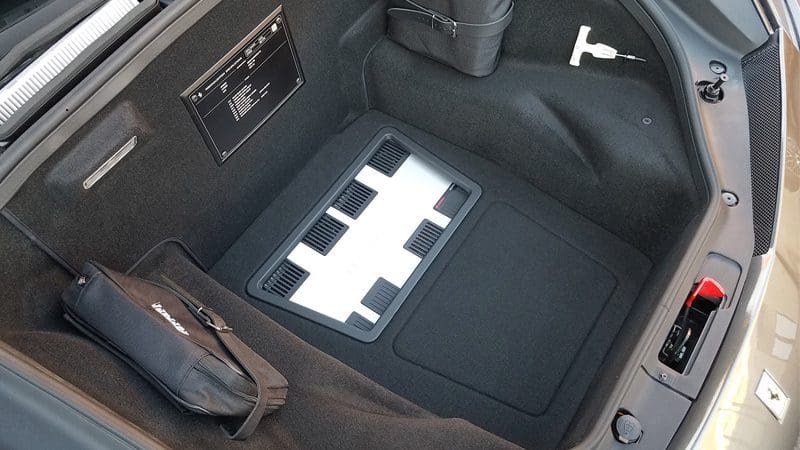 Custom car audio installations have changed a great deal over the years. More often than not, custom installations from years ago often looked like ‘bolted-on’ additions to a vehicle. Modern systems blend seamlessly with your interior. Advances in construction techniques allow your installer to create complex multi-dimensional shapes that look like they came from the vehicle assembly line. Read on as we contrast the materials and designs of the past with what is currently available.
Custom car audio installations have changed a great deal over the years. More often than not, custom installations from years ago often looked like ‘bolted-on’ additions to a vehicle. Modern systems blend seamlessly with your interior. Advances in construction techniques allow your installer to create complex multi-dimensional shapes that look like they came from the vehicle assembly line. Read on as we contrast the materials and designs of the past with what is currently available.
Source Units
If you look at a custom installation more than about five years old, the trademark was an aftermarket source unit in the dash. Working backward chronologically, we saw Double-DIN navigation systems, flip-up multimedia receivers, detachable face CD receivers and pull-out cassette decks with CD changers. The quality and features of factory radios just could not match what the aftermarket had to offer.
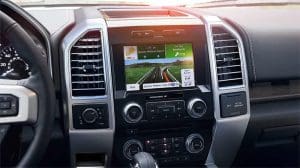 As companies like Ford spearheaded the move towards integrated infotainment solutions like Ford Sync, vehicle manufacturers increased their emphasis on providing clients with more features and better performance. Navigation, USB support for MP3 and WMA files, iPhone control and backup camera systems are now common in even the most basic of vehicles.
As companies like Ford spearheaded the move towards integrated infotainment solutions like Ford Sync, vehicle manufacturers increased their emphasis on providing clients with more features and better performance. Navigation, USB support for MP3 and WMA files, iPhone control and backup camera systems are now common in even the most basic of vehicles.
Modern source units have become a central control system for vehicle functions such as heating and cooling adjustments. They also have become vehicle information displays for things like tire pressure monitoring. In the past, the radio was a single component that performed a single task. Now, they are an integral part of the car, and no longer an option that can be replaced easily. Many modern vehicles use distributed multimedia systems that cannot be replaced at all.
How do we upgrade the sound system? Your mobile electronics specialist retailer is armed with several integration solutions that work with your factory source unit. These products allow for the installation of high-power amplifiers, signal processors and speaker upgrades to dramatically improve the performance of the system. Vehicle manufacturers rarely invest in high-quality speakers, so there is ample opportunity to improve even premium-branded OEM sound systems.
Cosmetic Integration
Another telltale sign of an old-school, high-end sound system were custom door panels. A set of aftermarket components mounted to an adapter plate or panel on top of the factory door skin was common. A premium installation may have a custom cloth-covered grill over the speaker instead of the mesh grill provided by the manufacturer.
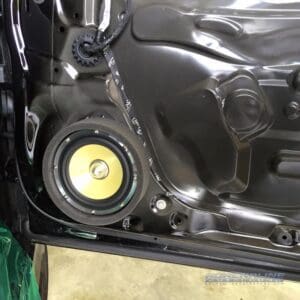
Modern sound system upgrades are often nearly invisible. With the increase in available speaker mounting depth afforded by complex contoured door panel designs, high-end component speakers can be installed behind factory grills on custom adapter plates. Once the door is back together, there is no sign of the upgrade. Add in some sound deadening and speaker coupling rings, and the performance of your new sound system will increase by another order of magnitude.
Depending on the design of the vehicle, the tweeters from the new component set may fit into the factory location with little to no modification. In cases where the factory tweeter is in a location that doesn’t provide optimum placement, your installer can fabricate a compact tweeter pod for the sail panel or mount them in the A-pillar. Either way, the result is cosmetically inconspicuous while offering excellent performance.
Subwoofer Enclosures
It used to be that having a subwoofer in your vehicle meant sacrificing a significant amount of storage area in the hatch or trunk of your vehicle. A pair of ten- or twelve-inch subwoofers in a large vented enclosure took up take up a large amount of space. While the underlying philosophy of how speakers work has not changed in decades, modern subwoofer designs produce excellent low-frequency output from extremely compact enclosures. Enclosures concealed in spare tire wells or into the corner of a hatch take up little to no cargo space while providing excellent low-frequency performance.

Pickup trucks are a popular platform for upgrades. There are now dozens of subwoofers on the market that feature basket and motor designs that allow for under-seat enclosures. A pair of ten-inch subwoofers under the rear seat of a Sierra, Silverado, F-150 or Ram is a daily occurrence.
Materials and Cosmetics
If you look back through car audio magazines from the 90’s, you would be assaulted with amplifier and processor racks finished in tweed and trunk liner carpet. For a custom show-car installation, high-gloss painted fiberglass was popular. Looking back, these installations rarely matched the styling cues and materials that came from the factory. Instead, they seemed to contrast them deliberately. There are always exceptions, but from a stereotypical perspective, divergence appeared to be the name of the game.
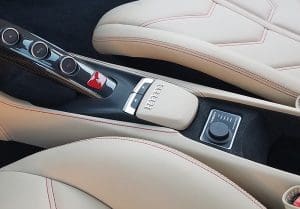
Modern installations use vinyl that matches the factory materials for color and often for grain. Acrylic plastic inserts replicate factory styling accents. Where new grills need to be created, installers are now including multi-dimensional contours to give the panel more depth and elegance. Many installations feature painted dash or center console inserts for DSPs and radar detector control panels that match other styling cues correctly. Trunk installations are trimmed nicely so the subwoofer enclosure looks integrated rather than something dropped in back of a vehicle. Chrome inserts, accent lines and the use of several complementary materials can turn what was an all-black carpeted trunk into a creative and highlighted part of the system. But it will still look like it is a cosmetically-integrated part of the vehicle.
The highest praise for most installers is to hear that the audio system they installed sounds exceptional, and that it looks like it was a factory-installed option!
System Design and Equipment
The proliferation of reasonably priced digital signal processors has changed the way car audio systems are designed. In days gone by, a mid-level sound system upgrade may have included a four-channel amplifier, a subwoofer amplifier, a set of component speakers for the front doors, a set of coaxial speakers for the rear doors and a subwoofer. Now, rear speaker upgrades are often forsaken in favor of a DSP processor and active filtering on the front stage speakers.
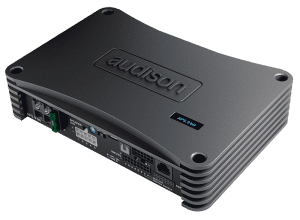
The benefits of a fully active system are dramatic. Your installer has full control over the crossover frequencies and output levels for each speaker. He can equalize and adjust the signal delay to the left and right speakers to create a focused and stable soundstage across the dash of the vehicle. Your music will sound more natural and realistic. Many new system amplifiers include built-in digital signal processors to allow for a fully active three-way system installation using a single chassis. Some of these amplifiers are small enough to fit under a seat to save space.
Upgrade your Sound System for Better Performance
A lot has changed regarding car audio system design, equipment choices and vehicle integration. You can enjoy recording studio or concert-like performance from a system upgrade that is nearly invisible. If you were a fan of car audio systems years ago, then it is worth visiting your local mobile electronics specialist retailer today. You will be able to experience the latest products and installation techniques in person.

You’ve given me a lot of useful information about car restoration. I’m expecting to hear from you soon.